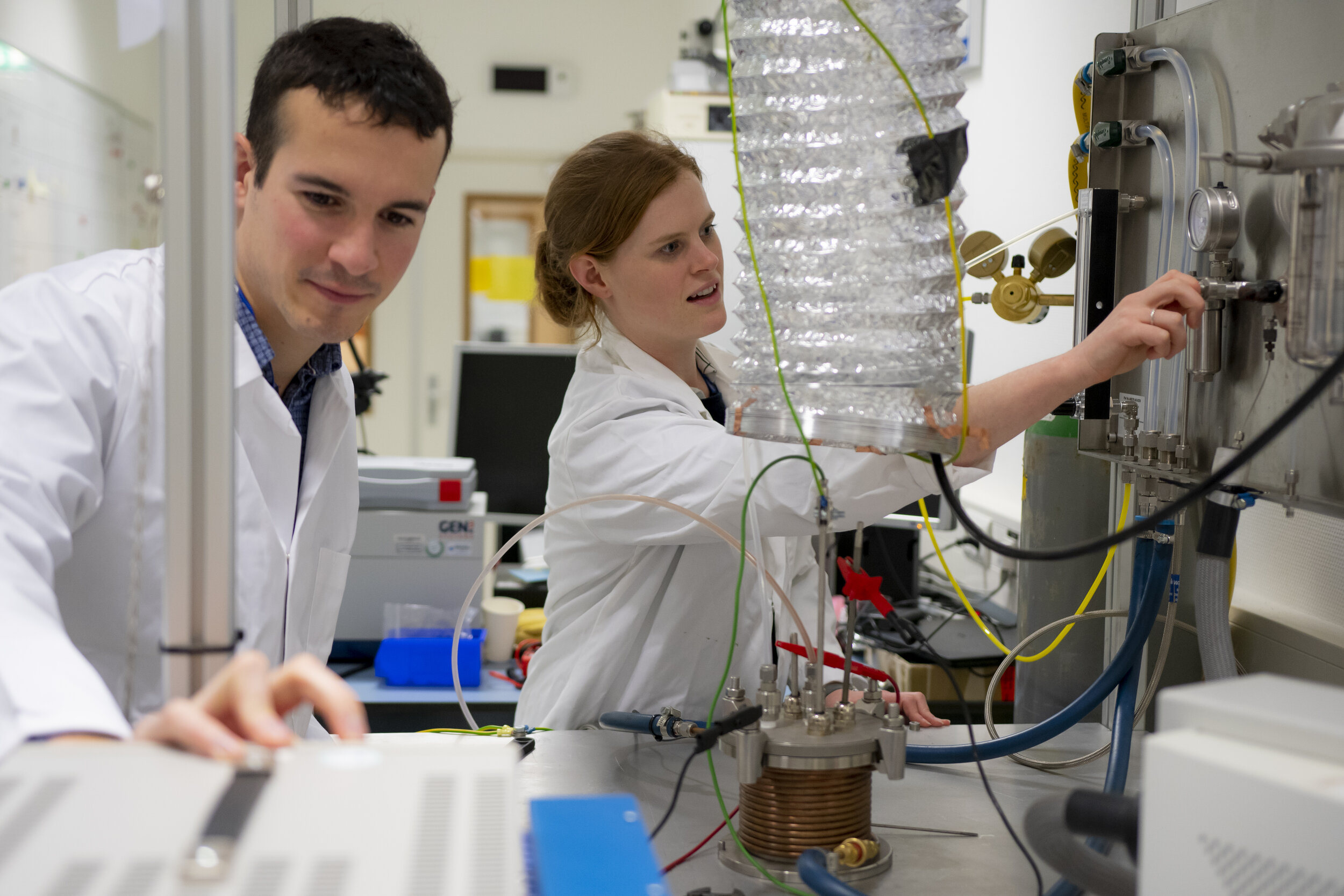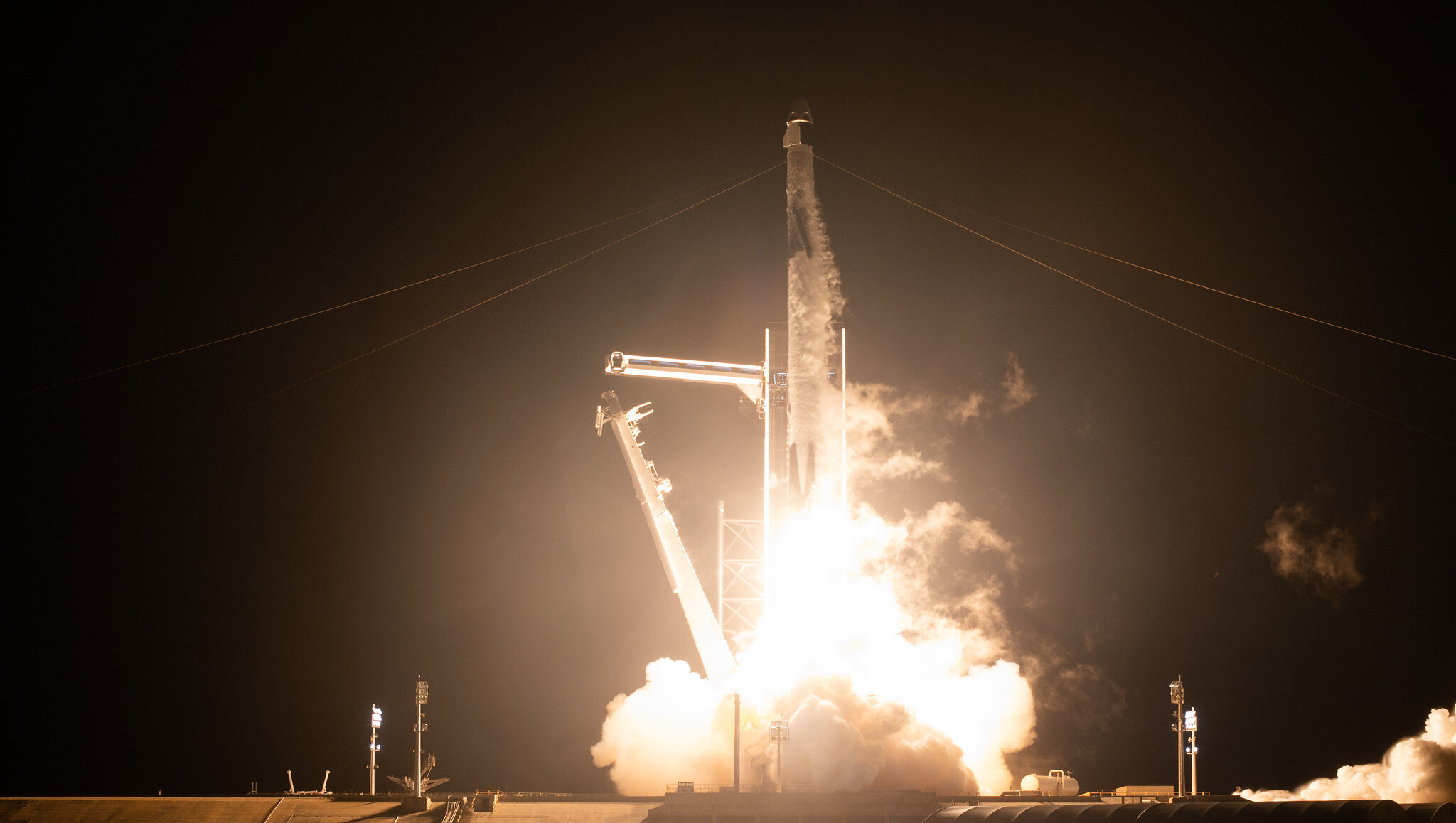PICTURED: ESA research fellow Alexandre Meurisse and Beth Lomax of the University of Glasgow producing oxygen and metal out of simulated moon dust. Photo credit: © ESA–A. Conigili
British scientists have developed a method that processes lunar soil into oxygen and metal powders that can be used to 3D print moon base infrastructure.
Having achieved success with simulated lunar soil at the beginning of 2020, a private-public partnership is tweaking the method so as to make it better adapted for operation in space or on the surface of the moon.
Samples of lunar ‘regolith,’ the rocky soil which covers our nearest neighbor, have been found to contain 40-45% oxygen, often representing the most abundant present element. Being that the oxygen is bound up in oxides that take the form of minerals and glass, it’s unavailable for breathing, or conversion to rocket propellant.
Developed at a special Netherlands testing facility operated by the European Space Agency (ESA), the method uses molten calcium chloride salt to separate these compounds, conducting the freed oxygen to an anode, and leaving the other materials behind.
The process, called molten salt electrolysis, was developed for commercial metal and alloy processing by a company called Metalysis.
“Being able to acquire oxygen from resources found on the Moon would obviously be hugely useful for future lunar settlers, both for breathing and in the local production of rocket fuel,” suggests Beth Lomax, who got her Ph.D. from the University of Glasgow in a program to study Metalysis’ method and export it to the ESA’s ‘Materials and Electrical Components Laboratory of the European Space Research and Technology Centre,’ or ESTEC for short.
PICTURED: Simulated lunar regolith with oxygen (left) and after the molten salt electrolysis removes it (right). Photo credit: © Beth Lomax – University of Glasgow.
Eat my dust
The Metalysis plant extracts the oxygen from metal alloys and releases it into the atmosphere, so Lomax and ESTEC had to adapt their technology to save the oxygen for later use.
While gold has been a reliable measurement for currency systems for millenia, in space its value is eclipsed by oxygen, which will not only be a primary component of rocket fuels, but also for space stations and lunar bases as breathable air.
“At Metalysis, oxygen produced by the process is an unwanted by-product and is instead released as carbon dioxide and carbon monoxide, which means the reactors are not designed to withstand oxygen gas itself,” explains Beth in a press release last January.
“So we had to redesign the ESTEC version to be able to have the oxygen available to measure. The lab team was very helpful in getting it installed and operating safely”.
The team is now in the process of finely-tuning the technology to make it more easily utilized in space; starting with temperature requirements. In Metalysis’ operation, the salt and lunar regolith were heated to 950°C, temperatures that would be extremely taxing for any lunar energy supply to generate.
They are also looking to reduce the size of the chamber where the reaction takes place so that it can be more easily transported.
“Some years ago we realised that the seemingly unimportant by-product of our terrestrial mineral extraction process could have far-reaching applications in space exploration,” says Ian Mellor, managing director at Metalysis.
“We look forward to continuing to explore with ESA, and our industrial partners, how to get our Earthly technology space-ready”.
The partnership between private and public is looking to create functional scale models ready for testing on the moon’s surface in the mid 2020s
3D-printing buildings on the moon
One of the most useful things about Metalysis’ process is that it leaves behind useful minerals which can hypothetically be used for 3D printing components of lunar settlement infrastructure.
Whether or not any of these minerals can be directly utilized, or will require refining first isn’t known. Furthermore, the exact material composition of the lunar regolith would depend on where the sample is taken.
However like the oxygen machine, which is about the size of a home tumble dryer, ESTEC hopes to have a fully-proven and operational testing system for 3D printing minerals on the moon somewhere around 2025.
As private industry, such as engineering companies like Metalysis, mining companies like Trans Astronautica, or manufacturers like SpaceX and Blue Origin, move further and further into areas once-exclusively dominated by government agency, the instinct to drive down costs is guiding a lot of early space-age technology.
Reusable rockets, rocket propellant mining from asteroids, solar sailing technology for shuttle and satellite steering, and oxygen production from the lunar surface, are all examples of companies attempting to avoid the most costly aspect of space settlement and exploration: launching a rocket.
If ESA’s future lunar bases need to make only two fewer resupply missions per year because of the Metalysis plant, that would save them $1.6 billion if they use NASA’s Space Launch System as they expected they would last year.




